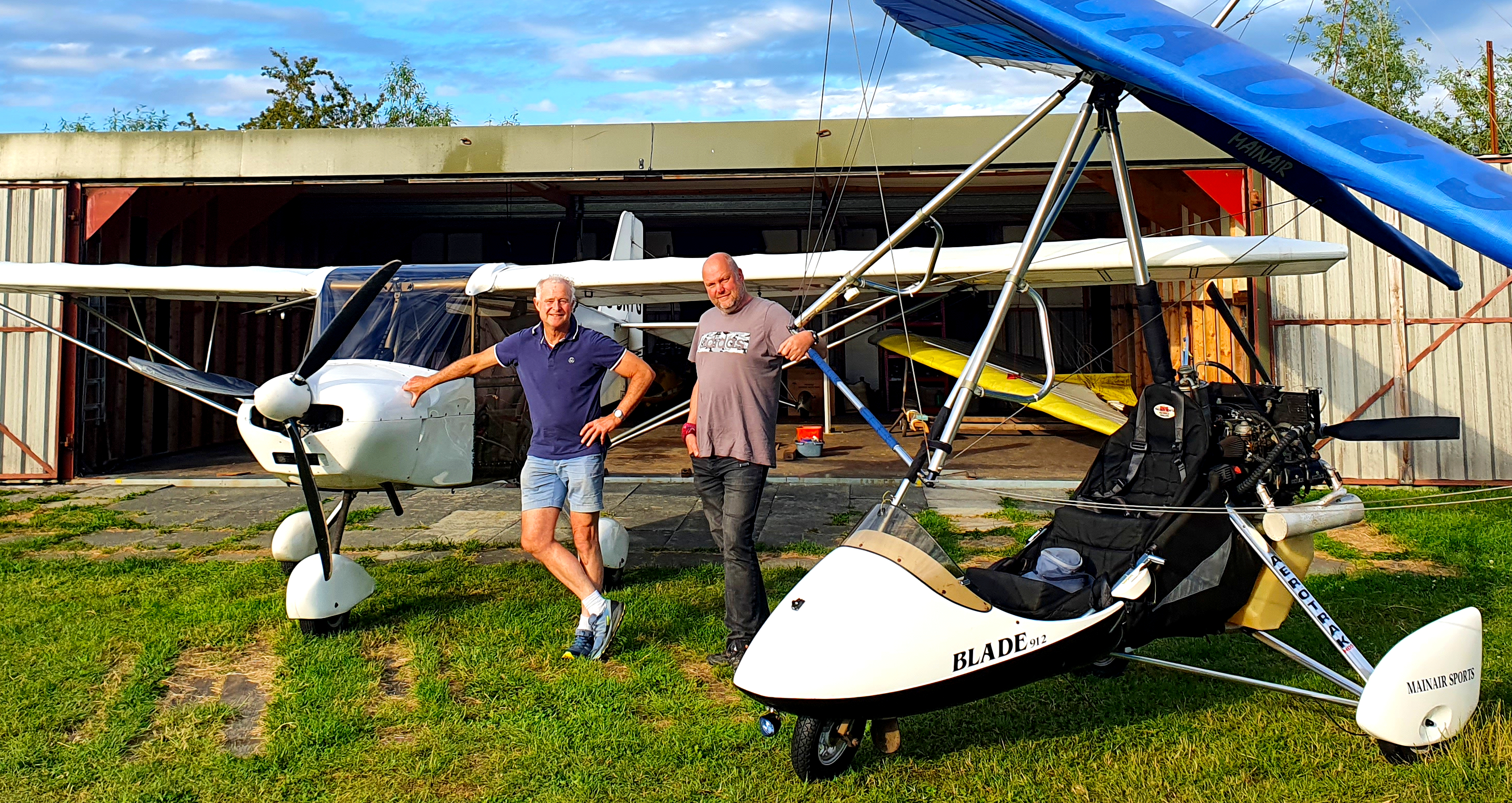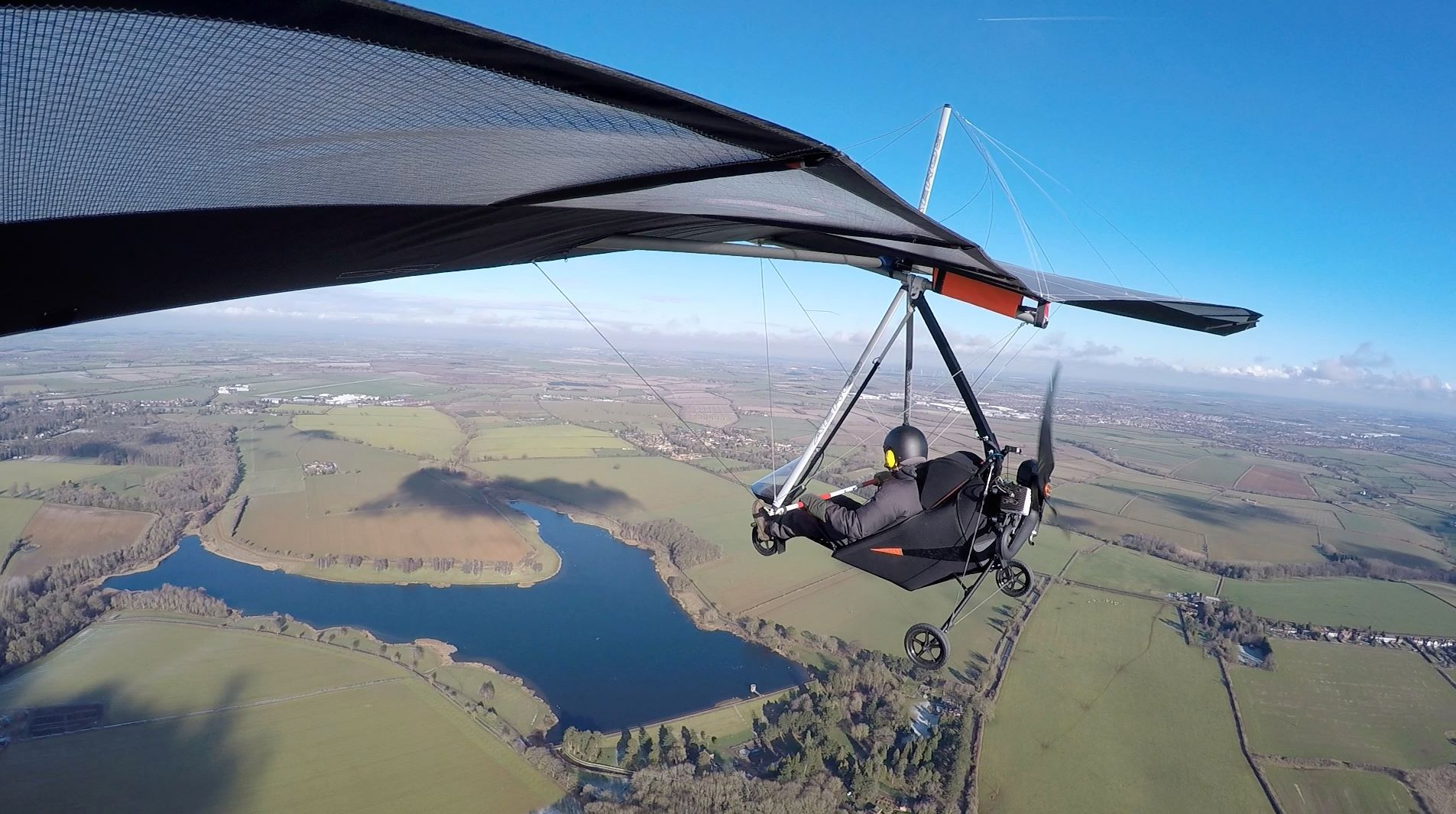Learning to fly with us means you are in the very experienced hands of our CFI Graham Hobson who, over decades, has successfully helped hundreds of fledgling pilots gain their licenses, become seasoned flyers and some have gone on to become instructors or commercial pilots themselves.
Instruction takes place on a range of Flexwing and Fixedwing school or privately owned aircraft. Students work through the syllabus to gain their National Private Pilots License. An optional ground school is run to a timetable to suit current students covering all the topics to pass the required ground exams.
The first thing to do is contact us for a trial flight. You will be taken up by an instructor who will introduce you to the flight controls and if you decide to continue this hour will count towards the licence. Booking lessons forthwith is as flexible as we can make it. Progression through the course depends on personal aptitude and frequency of lessons.
There is a choice of flexwing or fixedwing aircraft to learn to fly on, the license permits you to fly either type after a converion course.
Flying lessons are generally taken as 1 hour of airtime in a 2 hour slot allowing for pre and post flight briefing.
Meet the Team - Graham and Mark

Training Tarriff
- DUAL INSTRUCTION school aircraft (flexwing) £145.00/hour airtime
- DUAL INSTRUCTION school aircraft (fixedwing) £145.00/hour airtime
- DUAL INSTRUCTION own aircraft £120.00/hour airtime
- SOLO SUPERVISION own aircraft £72.00/day
- SOLO SUPERVISION school aircraft as above
When established on the course we can advise you on the purchase of suitable new or second hand aircraft and the possibility of joining a syndicate. There is also hangarage, aircraft sevicing and inspections plus loads of free advice.
Once a qualified pilot, there are lots of flying and social activities to get involved in. We are affiliated to the Northwest Microlight Aircraft Flying Club, an active, longstanding and friendly organisation, who provide comradeship, airfield facilities, a clubhouse and fly-outs. There is no end of beautiful scenery to fly over locally, having the Lake district, Forest of Bowland and Morecambe bay on our doorstep.
AIRCRAFT TYPES
There are two basic categories of Microlight.
1) Weight shift/Flexwing
Typified by a hang glider style wing (Delta Wing) with a 1-2 seat open air trike unit suspended from the wing which houses the seats (usually in tandem configuration), engine, fuel tank and a three wheel undercarriage in tricycle fornation. They are versatile, capable of short field take-off and landing and can be derigged, folded onto a trailer and taken home if necessary. Flexwing microlights are no slouches either, some, powered by a 912 Rotax engine can cruise comfortably at 70mph and make credible cross country touring aircraft.
2) Fixedwing/3 axis
These typically look like small conventional aircraft which to all intents and purpose they are, operated by conventional controls: ailerons, rudder and elevators. They tend to be more expensive than their Flexwing cousins but have the advantage of being tolerant of stronger winds and have an enclosed cockpit which is more comfortable in winter months. They can generally achieve faster cruising speeds because of their more streamlined form.
Both types must fall beneath a 600kg all up weight, have a single engine, carry no more than 2 people and operate in conditions of good visibility. There aren't instrument ratings available for microlights and therefore they can't be flown in cloud or at night.
Microlight aircraft with the advances of modern technology provide a fast, fun, relatively inexpensive and safe form of flying.
Sub 70 kg aircraft.
These single seat aircraft are not Microlights, they do not require a license to be flown and are becoming increasingly popular.
They fit in well with this category of aircraft and although no license is required, we strongly advise pilots to have some instruction working through the NPPL syllabus up to the solo stage. This ensures pilots have the skills and knowledge required to fly safely and fit in with other airfield users. We at NMS have successfully trained many pilots to do just that.

There are no links to display.
